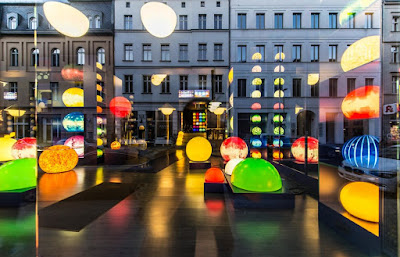To
understand just how revolutionary LED light bulbs are as well as why they are still expensive, it is
instructive to look at how they are manufactured and to compare this to the
manufacture of incandescent light bulbs.
This article explores how incandescent
light bulbs are made and then contrasts that process with a description of the
typical manufacturing process for LED lighting bulbs.
Initially produced by hand, light bulb manufacturing is now almost entirely
automated. First, the filament is manufactured using a process known as
drawing, in which tungsten is mixed with a binder material and pulled through a
die (a shaped orifice) into a fine wire.
Next, the wire is wound around a metal
bar called a mandrel in order to mold it into its proper coiled shape, and then
it is heated in a process known as annealing, softening the wire and makes its
structure more uniform..
Secondly, the coiled filament is attached to the lead-in wires. The lead-in wires have hooks at their ends which are either pressed over the end of the filament or, in larger bulbs, spot-welded.
Thirdly, the glass bulbs or casings are produced using a ribbon machine. After heating in a furnace, a continuous ribbon of glass moves along a conveyor belt. Precisely aligned air nozzles blow the glass through holes in the conveyor belt into molds, creating the casings.
Fourthly, the base of the bulb is also constructed using molds. It is made with indentations in the shape of a screw so that it can easily fit into the socket of a light fixture.
Fifthly, once the filament, base, and bulb are made, they are fitted together by machines. First, the filament is mounted to the stem assembly, with its ends clamped to the two lead-in wires.
Secondly, the coiled filament is attached to the lead-in wires. The lead-in wires have hooks at their ends which are either pressed over the end of the filament or, in larger bulbs, spot-welded.
Thirdly, the glass bulbs or casings are produced using a ribbon machine. After heating in a furnace, a continuous ribbon of glass moves along a conveyor belt. Precisely aligned air nozzles blow the glass through holes in the conveyor belt into molds, creating the casings.
Fourthly, the base of the bulb is also constructed using molds. It is made with indentations in the shape of a screw so that it can easily fit into the socket of a light fixture.
Fifthly, once the filament, base, and bulb are made, they are fitted together by machines. First, the filament is mounted to the stem assembly, with its ends clamped to the two lead-in wires.
Next, the air inside the bulb is evacuated,
and the casing is filled with the argon and nitrogen mixture.
The computer industry is well suited to manufacture LED lighting bulbs. The process isn't a whole lot different than making a computer motherboard. The companies making the LEDs themselves are generally not in the lighting business.
The computer industry is well suited to manufacture LED lighting bulbs. The process isn't a whole lot different than making a computer motherboard. The companies making the LEDs themselves are generally not in the lighting business.
LED lamps themselves are
expensive in part because it takes a number of LEDs to get wide-area
illumination instead of a narrow beam, and the assembly cost adds to the
overall price.
In addition to this, the assemblies consisting of arrays of LEDs create more opportunities for product defects.
A LED light bulb consists of four essential components: an LED circuit board, a heat sink, a power supply, and a shell. The lights start out as bare printed circuit boards (PCB) and high luminance LED elements arrive from separate factories which specialize in making those components.
In addition to this, the assemblies consisting of arrays of LEDs create more opportunities for product defects.
A LED light bulb consists of four essential components: an LED circuit board, a heat sink, a power supply, and a shell. The lights start out as bare printed circuit boards (PCB) and high luminance LED elements arrive from separate factories which specialize in making those components.
LED elements themselves create a bit of heat, so the
PCB used in lighting fixtures is special. Instead of the standard
non-conductive sandwich of epoxy and fiberglass, the circuit board is laid out
on a thin sheet of aluminum which acts as a heat sink.
For more information on Ai LED light bulbs, pls visit Ai LED lighting bulbs
For more information on Ai LED light bulbs, pls visit Ai LED lighting bulbs

No comments :
Post a Comment